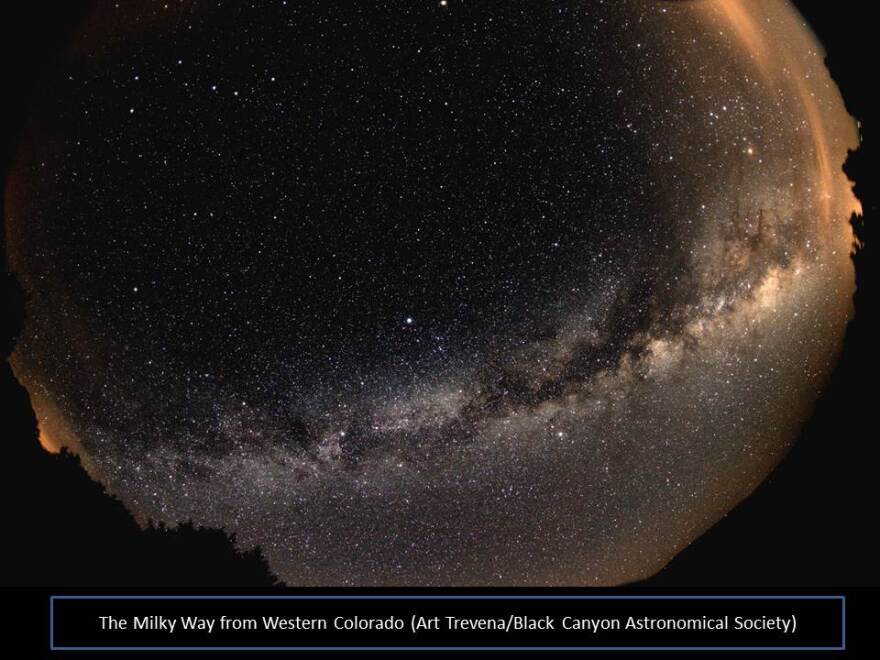The Milky Way
Air Dates: October 24 & 29, 2014
On these late October evenings, you may see a hazy band of light stretching from the southwestern horizon and crossing overhead to the northeast. This is the Milky Way, an object of great wonder throughout human existence.
In 1610, Galileo pointed his new telescope at the Milky Way and observed “a vast congeries of stars” too faint to be seen individually by the unaided eye. Today, we know the Milky Way is one of billions of vast star systems called galaxies. The Milky Way Galaxy is home to hundreds of billions of stars, including our own Sun, and vast swaths of dust and gas.
To map the structure of our galaxy, astronomers rely on infrared light and radio waves, because visible light is mostly absorbed by galactic dust. The Milky Way is a flattened disk 100,000 light-years wide, with a central bulge that is 10,000 light-years thick. That means it takes light, at 186,000 miles per second, 100,000 years to travel the Galaxy end-to-end, and 10,000 years to travel top-to-bottom. The Milky Way’s disk comprises two major spiral arms and several minor spurs. The entire Galaxy spins, completing a rotation once every 240 million years.

In our October sky, the Milky Way appears brightest toward the southwestern horizon, because this is the direction of the central bulge, where light density is greatest. As you look from there toward the northeast, the Milky Way becomes fainter -- you are now looking away from the central bulge toward our galaxy’s edge. You may notice a coal-black band cutting across nearly half of the Milky Way’s course. This is the Great Rift, an intervening zone of dust blocking the visible light of stars behind it, much like a storm cloud blocks the Sun.
So, make some time this autumn to witness the spectacle of our home galaxy! Western Slope Skies is produced by members of the Black Canyon Astronomical Society. This episode was written & voiced by Art Trevena.



